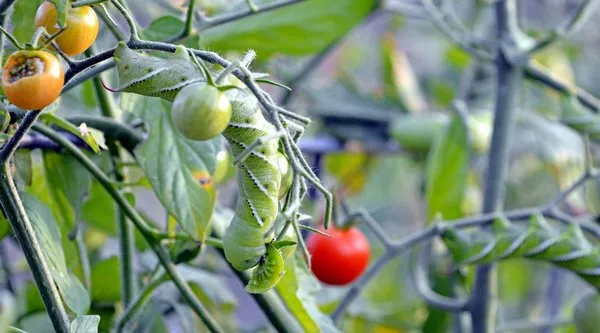Growing tomatoes can be a rewarding experience, but it can also be frustrating when your plants produce an abundance of flowers but fail to set fruit. This phenomenon, known as “flower drop,” is a common issue that many gardeners encounter. Understanding the reasons behind this problem can help you troubleshoot and improve the fruit set on your tomato plants. In this article, we will explore the various factors that can cause tomato plants to flower but produce no fruit, along with potential solutions to ensure a bountiful harvest.
Environmental Factors
Tomatoes are sensitive to their environment, and certain conditions can impede fruit set. Extreme temperatures, especially high temperatures exceeding 90°F (32°C) during the day or dropping below 55°F (13°C) at night, can cause flower drop. High humidity can also affect pollen viability and interfere with pollination. Additionally, inadequate sunlight or excessive shade can inhibit the plants’ ability to produce fruit.
To mitigate these environmental factors, choose tomato varieties that are better suited to your climate. Provide proper sun exposure by ensuring at least six to eight hours of direct sunlight daily. Consider using shade cloth or providing shade during excessively hot periods. Providing consistent moisture levels through proper watering practices can also help regulate temperatures and humidity around the plants.
Lack of Pollination
Tomatoes are self-pollinating plants, but they can benefit from pollinators like bees and bumblebees. Inadequate pollination can result in flower drop and low fruit set. If there is a lack of pollinators in your area, or if the plants are grown indoors without access to natural pollinators, hand pollination can be beneficial. Gently vibrating the flowers or using a small brush to transfer pollen from one flower to another can help improve fruit set.
Nutrient Imbalance
Tomatoes require specific nutrients for healthy growth and fruit production. An imbalance in essential nutrients, particularly phosphorus and potassium, can contribute to flower drop. Phosphorus deficiency, in particular, can hinder flower development and fruit set. It is important to ensure that the soil is well-balanced and rich in organic matter.
Conduct a soil test to determine the nutrient levels and adjust accordingly. Supplementing with a balanced fertilizer, specifically formulated for tomatoes, can help provide the necessary nutrients. Choose a fertilizer with a higher middle number (e.g., 5-10-10) to promote flowering and fruit development.
Overfertilization with Nitrogen
While tomatoes require nitrogen for healthy leaf and stem growth, excessive nitrogen can result in lush foliage at the expense of fruit production. Too much nitrogen can cause an imbalance between vegetative growth and reproductive growth, leading to fewer fruits or flowers dropping prematurely. Avoid overfertilization with nitrogen-rich fertilizers and opt for a balanced approach.
Watering Issues
Inconsistent watering practices can also lead to flower drop in tomato plants. Irregular watering, such as allowing the soil to dry out completely followed by excessive watering, can stress the plants and cause flowers to drop. Additionally, overwatering can lead to root rot, which further hampers fruit production.
Maintain consistent soil moisture by watering the plants deeply and regularly. Aim to keep the soil evenly moist but not waterlogged. Mulching around the plants can help retain moisture and regulate soil temperature.
Disease and Pest Problems
Diseases and pests can also interfere with fruit set in tomato plants. Common issues include fungal diseases like blossom end rot or fungal infections that affect the flowers. Pests such as aphids, thrips, or spider mites can damage the flowers and prevent fruit formation.
Implement proper pest management techniques, including regular inspection, early detection, and appropriate treatments. Provide adequate air circulation and avoid overhead watering to minimize fungal diseases. In severe cases, consult with a local extension service or a gardening expert for targeted recommendations.
Varietal Characteristics
Some tomato varieties are naturally more prone to flower drop than others. Varieties with a heavy fruit load or certain genetic traits may exhibit a higher rate of flower drop. Research the characteristics of the tomato variety you choose to determine if it is known for its fruit-setting capabilities.
Conclusion
Understanding the reasons behind flower drop in tomato plants is crucial for achieving a successful harvest. Environmental factors, lack of pollination, nutrient imbalances, overfertilization with nitrogen, watering issues, disease, and pest problems, as well as varietal characteristics, can all contribute to the issue. By identifying the specific factors affecting your plants and implementing appropriate solutions, such as providing optimal growing conditions, proper pollination techniques, balanced nutrition, consistent watering practices, and effective pest and disease management, you can maximize fruit set and enjoy a bountiful tomato harvest. With patience and careful attention to the needs of your tomato plants, you can overcome flower drop and ensure a rewarding gardening experience.


